Text

#AI?#Music#Instrument#Organ#Console#Electronic#Synthesizer#Loudspeakers#Retro#1960s#Keyboards#Outdoors#Meadow#Winter
312 notes
·
View notes
Link

Stewart Dickson, [email protected]
January 30, 1990
Abstract A computer-aided method of modular hull construction is presented which uses a novel means for orienting its component parts, based on the geometrical and topological attributes of Platonic Solids. The results of the construction can be seen to be an extension of the Geodesic Dome to a non-spherical surface topology; i.e., a topology containing many handles. The ability to build a closed surface of non-spherical topology with a regular polygon tiling is an improvement over previous modeling methods. … 2. A Data Structure Supporting Manifold Connectivity
A version of this code dating from 1989 can be downloaded from:
http://www.netlib.org/poly2/readme
struct topology { … struct edges {
int vertno[2];
int faceno[2];
float length;
float theta;
} **edge; … }; See also: Glassner, Andrew, Maintaining Winged-Edge Models, Graphics Gems II, p. 191-201. James Arvo (editor), Academic Press, 1991, ISBN: 0120644819.
See also surface Thickening software at the SourceForge: https://sourceforge.net/projects/dotsplus3d/



#3D#Computer Graphics#Graphics#1989#Surface#Mesh#Topology#Winged-Edge#Modeling#Polygon#Thickening#Manifold#Color#Printing#Shapeways
18 notes
·
View notes
Photo
I'll never forget seeing Vito Acconci's presentation at the 1992 International Sculpture Conference, University of the arts, Philadelphia. He presented a proposal for a school bus shelter, wherein the building was fractured, with the roof protruding diagonally out of the ground. He said, in his New York Italian accent,
"School is OUT. School has been BLOWN APART." (h/t Alice Cooper, "The greatest exponent of chaos" --Salvadore Dali)
So, you have to read "Directions" in Vito Acconci's voice.

Directions | Vito Acconci, 1969
#visual#art#design#sculpture#pop#culture#reference#Vito Acconci#Directions#RISD#University of the Arts#Philadelphia#Rhode Island
82 notes
·
View notes
Text
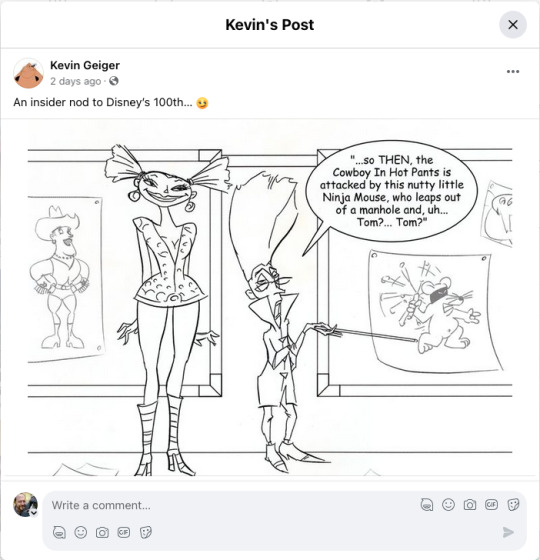


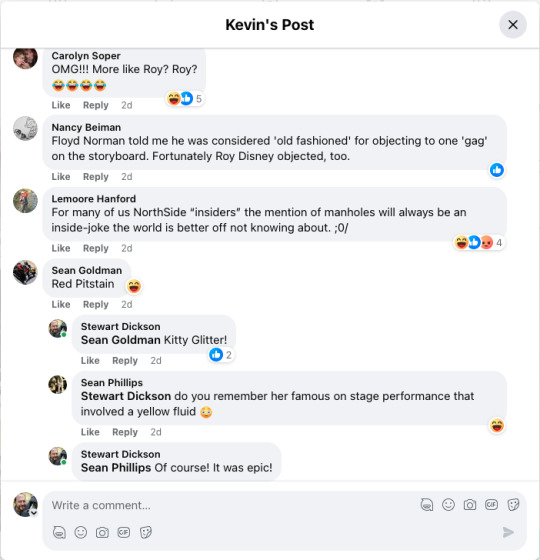
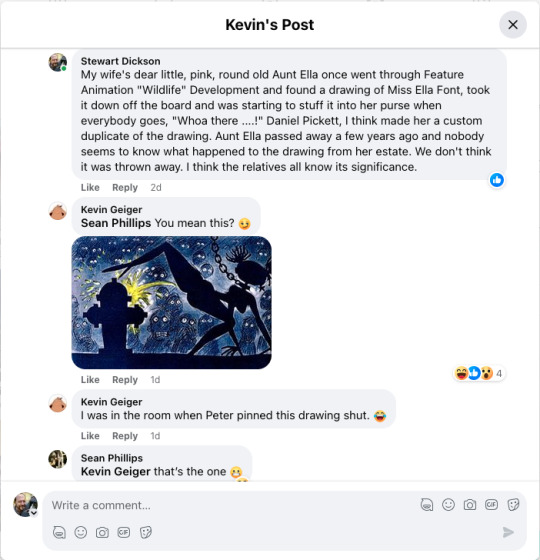
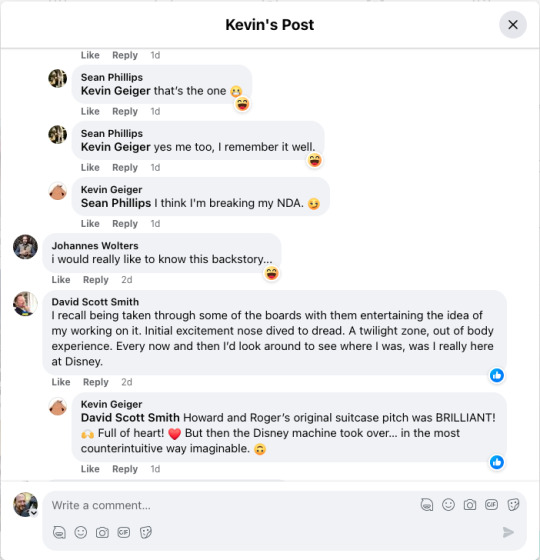

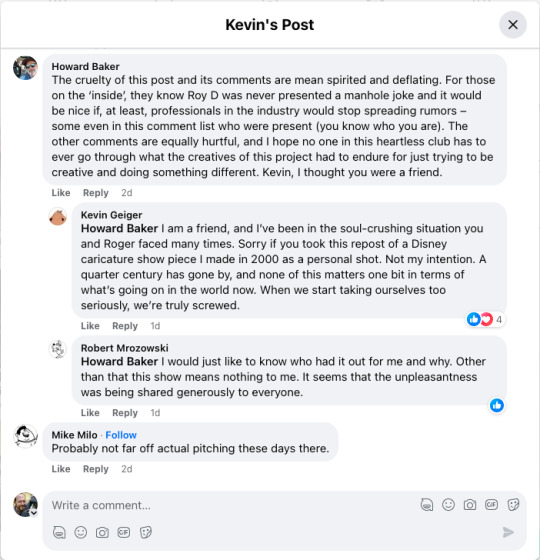
h/t Kevin Geiger on facebook
#Walt Disney#Feature Animation#2000#Ill-Fated#“WildLife”#film#pre-production#visual#effects#hollywood#development#pre production#CGI#3D#Characters#Kitty Glitter#Red Pitstain#Miss Ella Font#history#disney#100#anniversary#Insider#Group#Never-before-seen#Concept#Look#art
2 notes
·
View notes
Text

I'm pretty sure the chair Jobe (Jeff Fahey) is in is a stripped-down version of the one above -- the Flogiston Chair by Brian Vandellyn Park. The design put you into the (NASA) Neutral Body Position for maximum creative energy flow.

#Retro#1990s#Pronoia#Cyber#Cyberpunk#VR#Flogiston#Chair#Creative#Energy#Flow#Optimal#NASA#Neutral Body Pose#Futurist#Work#Space#Jeff Fahey#The Lawnmower Man#Pierce Brosnan
1K notes
·
View notes
Text

We won! Congrats to the #animation production workers at #Disney! The NLRB decision has paved the way to unionize!
IATSE Local 839 The Animation Guild on facebook
#film#production#effects#Industry#Visual#hollywood#collective#bargaining#IATSE#Labor#Relations#Union#Disney
1 note
·
View note
Text
Kevin Geiger
Sdopnotsre5ed:ghtAt2scf9 tYrh17197m0e4mat6y9uhg ma 733c0a3Mh ·
My latest course: “Developing Screenplays with ChatGPT” Heresy? MAYBE. Reality? ABSOLUTELY. EVOLVE or die.

#Cat#I farted#AI#OpenAI#ChatGPT#Screenwriting#Story#Hollywood#Development#Auto-Generating#Digital Assistant#film#production
0 notes
Text
ok NOW we can all freak out marvel vfx workers voted to unionize
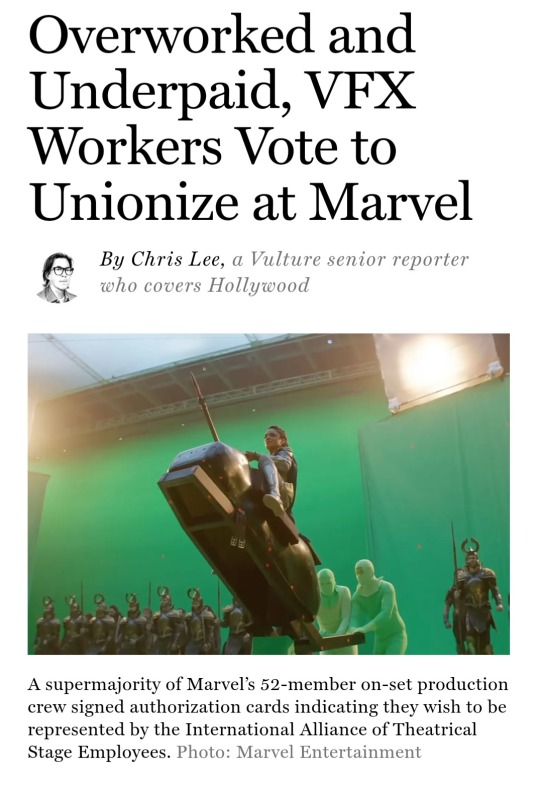
article here
#film#production#hollywood#studio#iatse#Organization#Collective#Bargaining#Union#VFX#Visual#Effects#Technical#Director
123K notes
·
View notes
Text
youtube
#Capitalism#Late-Stage#Feudalism#Monopoly#Ownership#Profit#Rent#Property#Production#film#Studio#SAG/AFTRA#WGA#Strike
5K notes
·
View notes
Text
https://goo.gl/maps/s7niH26dpiCK8KVq8

1 note
·
View note
Text
#University of Minnesota#Ph.D#Dissertation#Adam Duncan Harris#Hollywood#Film#History#Pacific Title and Art Studio
0 notes
Text
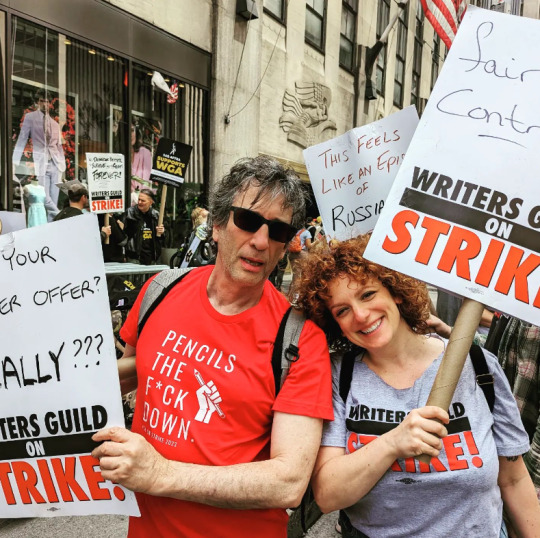

Neil in red
Neil in blue
Supporting the WGA strike is the right thing to do
:)
#neil gaiman#wga#wga strike#wga strong#Solidarity#iatse#writers guild of america#animation guild#strike#union strong
9K notes
·
View notes
Text
#T.A.G#I.A.T.S.E#theatrical#Film#Production#Workers#Rights#Organize#Collective#Bargaining#Agreement#The Animation Guild#Local 839#North Hollywood
16 notes
·
View notes
Link
I was there. My grandparents lived on Manhattan. My Grandfather worked for Bell Telephone Laboratory. My dad worked for DuPont. My Grandfather also had a connection to Disney.
…
American industry
Many of the large US corporations built pavilions to demonstrate their wares, vision, and corporate cultures. These included:
General Motors
Concept car inside the General Motors Pavilion
Industries played a major role at the New York World’s Fair of 1939-1940 by hosting huge, elaborate exhibits. Many of them returned to the New York World’s Fair of 1964-1965 with even more elaborate versions of the shows that they had presented 25 years earlier. The most notable of these was General Motors Corporation whose Futurama proved to be the fair’s most popular exhibit, in which visitors seated in moving chairs glided past elaborately detailed miniature 3D model scenery showing what life might be like in the “near-future”. Nearly 26 million people took the journey into the future during the fair’s two-year run.
IBM
The IBM Corporation had a popular pavilion, where a giant 500-seat grandstand called the “People Wall” was pushed by hydraulic rams high up into an ellipsoidal theater designed by Eero Saarinen. There, a film by Charles and Ray Eames titled Think was shown on fourteen projectors on nine screens, illuminating the workings of computer logic.[62] At ground level beneath the theater, visitors could explore Mathematica: A World of Numbers… and Beyond (an exhibit of mathematical models and curiosities) and view the Mathematics Peep Show (a series of short films illustrating basic mathematical concepts).[63]
Bell System
The Bell System (prior to its break up into regional companies) hosted a 15-minute ride in moving armchairs depicting the history of communications in dioramas and film named Ride of Communications. Other Bell exhibits included the Picturephone as well as a demonstration of the computer modem.
Westinghouse
Westinghouse Pavilion
The Westinghouse Corporation planted a second time capsule next to the 1939 one; today both Westinghouse Time Capsules are marked by a monument southwest of the Unisphere which is to be opened in the year 6939.[64] Some of its contents were a World’s Fair Guidebook, an electric toothbrush, credit cards (relatively new at the time) and a 50-star United States flag.
Sinclair Oil
The Sinclair Oil Corporation sponsored “Dinoland”, featuring life-size replicas of nine different dinosaurs, including the corporation’s signature Brontosaurus.[65] The statues were created by Louis Paul Jonas Studios in Hudson, New York.[66][67] They also contained a “space age” gas station with orbiting gas pumps shaped like rockets,[68] and a marine fuel station in the vicinity of the World’s Fair Marina.[69]
Ford
The Ford Motor Company introduced the Ford Mustang automobile to the public at its pavilion on April 17, 1964. The Ford pavilion featured the “Ford’s Magic Skyway” ride, in which guests rode in Ford convertibles past scenes featuring dinosaurs, cavemen, and a futuristic cityscape.[70] After the Fair, the Audio-Animatronic dinosaurs would move to Disneyland, becoming part of the Santa Fe & Disneyland Railroad’s “Primeval World” diorama in 1966.[70][71]
DuPont
DuPont presented a musical review by composer Michael Brown called The Wonderful World of Chemistrys.
…
Disney influence
Fountains and a reflecting pool mark the approach to the Unisphere
The fair is remembered as the venue that Walt Disney used to design and perfect his system of “Audio-Animatronics”, in which electromechanical actuators and computers control the movement of lifelike robots to act out scenes.[79]WED Enterprises designed and created four shows at the fair:
“Pepsi-Cola Presents Walt Disney’s ’It’s a Small World‘—a Salute to UNICEF and the World’s Children” at the Pepsi-Cola pavilion: Animated dolls and animals frolicked in a spirit of international unity accompanying a boat ride around the world. The song was written by the Sherman Brothers.
General Electric sponsored “Progressland” where an audience was seated in a revolving auditorium called the “Carousel of Progress”, where they viewed an audio-animatronic presentation of the progress of electricity in the home. The Sherman Brothers composed “There’s a Great Big Beautiful Tomorrow” for this attraction. The highlight of the exhibit demonstrated a brief plasma “explosion” of controlled nuclear fusion.[citation needed]
Ford Motor Company presented “Ford’s Magic Skyway”, a WED Imagineering-designed pavilion which was the second-most popular exhibit at the fair. It featured 50 motorless convertible Ford vehicles, including Mustangs, in an early prototype of what became the PeopleMover ride system. Audience members entered the vehicles on the main platform as they moved slowly along the track. The ride moved the audience through scenes featuring life-sized, audio-animatronic dinosaurs and cavemen.
At the Illinois pavilion, a lifelike President Abraham Lincoln recited his famous speeches in “Great Moments with Mr. Lincoln”, voiced by Royal Dano.
WED also created the 120-foot-high (37 m) Tower of the Four Winds which was located at the It’s a Small World pavilion. In addition, costumed versions of Walt Disney’s famous cartoon characters roamed around the fairgrounds and interacted with guests. After the fair, there was some discussion of The Walt Disney Company retaining these exhibits on-site and converting Flushing Meadows Park into an East Coast version of Disneyland, but this idea was abandoned. Instead, Disney relocated several of the exhibits to Disneyland in Anaheim, California, and subsequently replicated them at other Disney theme parks. Walt Disney World near Orlando, Florida, which opened with Magic Kingdom in 1971, is essentially the realization of the original concept of an “East Coast Disneyland”; Epcot, which opened in 1982, was designed as a permanent world’s fair.[80]
#It's a Small World#Disneyland#E.P.C.O.T#Tomorrowland#Audio Animatronics#1964 World's Fair#New York City#Technocracy#Futurism#Mid-Century#Modern#20th Century
19 notes
·
View notes
Photo

Robert Moog, pioneering inventor of the Moog synthesizer. (Photo by Jack Robinson, 1970) Check this blog!
#1970#Jack Robinson#Robert Moog#Analog#Music#Voltage#Controlled#Oscillator#Envelope#Generator#Keyboard#Synthesizer#Electronic#Modular
388 notes
·
View notes
Photo
We are stardust, we are golden, we are billion-year-old carbon, And we got to get ourselves back to the garden.



#Greetings#Aliens#Sagan#Salzman#Pioneer#Spacecraft#Nude#Renaissance#Human#Depiction#Form#Innocence#Primitive#Solar System#Space#Flight#Exploration#Stardust
798 notes
·
View notes
Text
Sisters With Transistors
https://metrograph.com/live-screenings/sisters-with-transistors/ Is a history of a forgotten side of Electronic Music. It really was an era of accelerating changes in technology. The tail end of it intersected with my life.
In 1971, my parents gave me a copy of Walter Carlos's "Switched-On Bach". This appears in "Sisters With Transistors", with the fact glossed over that Wendy Carlos was known as Walter on the record album and at the time she appears in the film. No matter, it all worked out in the end. I do remember reading the interview in "Playboy" magazine when Wendy Carlos came out trans.
In 1973, my 11th Grade Social Studies teacher said to me, "I think you might be interested in Emerson, Lake and Palmer." And so, I was. That year, I did my 11th grade research project on Electronic Music. Yes, there was no mention of women composers in the histories I read of Electronic Music. Later that year, I did a science project also on Electronic Music. I entered it in the Science Fair. It won Second Prize at my High School and an honorable mention in the Regional Science Fair at the Franklin Institute, in Philadelphia, which was totally awesome.
In high school, I wrote letters to Moog Music. I collected technical documents on the Arp Synthesizer. Engineers from Moog sent me schematics of older versions of some modules. I remember speaking on the telephone to the inventor of the Synclavier, whose advice centered on choice of CPU chip. https://en.wikipedia.org/wiki/Synclavier. The Synclavier is the instrument on which Frank Zappa programmed his final work, "Jazz From Hell."
I entered college determined to study Electrical Engineering in order to learn how to build modules for making Electronic Music. By the time I graduated, my professors were telling me, "The Texas Instruments Digital Signal Processing (DSP) chip can synthesize an entire symphony orchestra in real-time. Therefore, music is no longer a hardware problem, it is a software problem." (Shit Academics Say, https://academicssay.tumblr.com/)
Nevertheless, the primary result of my Undergraduate Electrical Engineering career was United States Patent #4,248,120, "Stringed Musical Instrument with Mechanical Feedback," February 3, 1981 and "On Electronic Strings in Live Performance: The Design and Construction of an Electroacoustic Monochord" published in "Perspectives of New Music" Vol. 20, Nos. 1 & 2, Fall-Winter 1981, Spring-Summer 1982. https://mathart.org/portfolio/SPD_Acoust_port_detail.html#E_Mono_I
I attended "Composer Encounters" a new music festival at the Delaware Arts Council put on by the Mid-Atlantic Modern Music Institute (M.A.M.M.I) as a music radio Disc Jockey. M.A.M.M.I was Professor Joseph Pinzarrone, jazz pianist and computer music composer and Dana Smith of Quaudio Audio recording studio.
I built a version of the Electroacoustic Monochord for performance at the State of Illinois at Chicago Building for Northwestern Computer Music's "New Music '85" event. And that was pretty much the end of my electronic music career. I did an outdoor acoustical sculpture at Triton College, River Grove, Illinois in 1987. By that time, I was heading more firmly into computer graphics, sculpture and animation.
But, my connection to Electronic Music did not end there. In 2005, I was living and working part-time in Asheville, North Caroline, which happened to be the final home of Robert Moog and the Moog Music Company. Robert had passed away in January, 2005, but the Memorial Celebration of his life happened in August of that year and I was there for it. Wendy Carlos spoke and she was brilliant. And you could not imagine her any other way than as she appeared then.
Someone told the story of how Robert Moog refurbished Clara Rockmore's Theremin for a concert in the 1970s, which performance probably was the one that appeared in "Sisters with Transistors," because Robert Moog is visible in the audience. Robert Moog was a genius with analog circuitry, which was why he was probably the only one to be trusted to rebuild a musical instrument built in the 1930s by Leon Theremin, himself.
Missing from Theremin's story in "Sisters with Transistors" is his involvement with the Russian secret police organization NKVD (the predecessor of the KGB). https://en.wikipedia.org/wiki/Leon_Theremin#Espionage
One of Robert Moog's daughters told the story at his Memorial Celebration of going Christmas shopping on the back of Keith Emerson's motorcycle. At the end of the Celebration, we were all invited to get up and dance, and I danced with that daughter of Robert Moog.
In 1989 to 1994 I was the first Unix computer Systems and Network Administrator in the Film School Computer Lab of California Institute of the Arts. I recognized many names in "Sisters with Transistors" of people who were at Cal Arts when I was there. I once had dinner with Morton Subotnick. We were with Vibeke Sorensen, Director of the Film School Computer Animation Program. She had encouraged me to bring the slides of my work with me. Mort Subotnick liked this one. https://photos.app.goo.gl/MeZVtA34F96YS9YT9
#Laurie Anderson#Wendy Carlos#Sisters With Transistors#Film#History#Electronic Music#New Music#Doctor Who#Switched-On Bach#Robert Moog#el paso mortgage broker#Emerson#Lake and Palmer#Leon Theremin#Clara Rockmore
0 notes